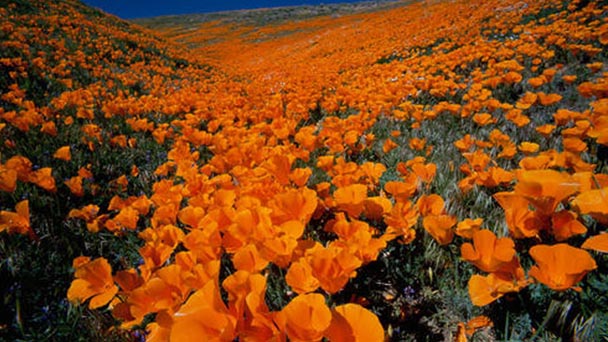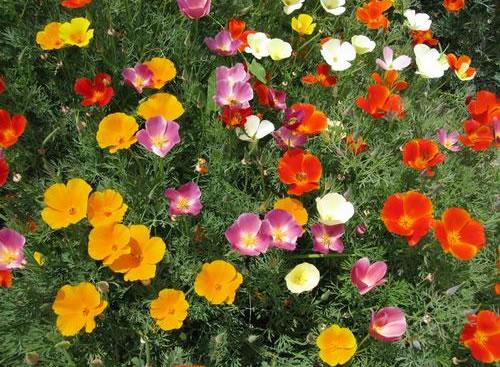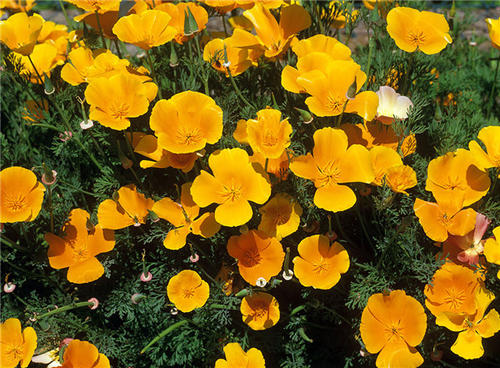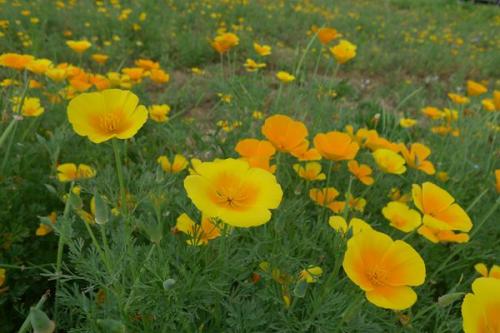The breeding methods and precautions of Eschscholzia californica
Written by Maggie
Nov 25 2020

The Eschscholzia Californica should be placed in full sunlight for curing during the breeding process. You need at least 6 hours of light. It also requires a lot of topdressing and maintenance.Trim them during the seedling period.Seeds can be sown and propagated. In the process of growth, it is also necessary to turn over the basin in time for soil conservation. In winter, the temperature should be maintained above 0℃.
Eschscholzia californica picture

Method of Eschscholzia californica breeding
1. Get plenty of light
Eschscholzia Californica is a sunny plant. Usually in the spring and autumn three seasons, it can be put in sufficient sunshine under the maintenance, especially in the winter dormant period, otherwise it is easy to affect the normal growth of plants. It needs at least 6 hours of light in normal times, but 4 hours in the hot summer sun.
2. Water and fertilizer management
The Eschscholzia Californica fertilizer requirement is not high, but it is unlikely to wait for the soil to dry out before watering. Usually plants do not need to do not water the soil, watering the principle of watering through. And if you want to preserve it better, you have to preserve it with topdressing. Fertilization is not required during the dormant period.
3. Pruning
In general, Eschscholzia Californica has a relatively slow growth rate. When the flower rhombus seedling grows to 30cm, it can be pruned. Wipe the top bud in time, so as to resist flower rhomboidea long, so that it can grow lush, promote flowering time, and can open a beautiful flower.
4. Sow and reproduce
Eschscholzia Californica is most likely sown by seed. Its seeds are smaller than other plants and do not need to be soaked to accelerate germination. The seeds can be seeded directly into the deciduous soil suitable for growth, covered with a fine layer of soil, and placed in the shade so that the seeds can take root and germinate.

Notes on Eschscholzia Californica breeding
1. Turn the pot and change the soil
Eschscholzia Californica is a place to turn and change soil every other year during the breeding process. During its growth, the soil is easy to harden. If not in time to turn the pot for soil, it will affect the normal growth of the plant. The substrate can be mixed with leaf mould, peat soil and river sand. When turning the pot and changing the soil, the rotten roots should be cut off, which is conducive to the growth of the plant.
2. Keep warm at low temperatures
Each plant has a different growth habit. If the Eschscholzia Californica season is below 10 ° C in winter, the plant will cease to grow and become progressively dormant. When the temperature is lower than 0℃, frostbitten plants are easy to be moved to a warm environment for curing immediately. The temperature can be controlled above 0℃.

Latest Updated
- Benefits of Bugleweed - 7 Science-backed Health Benefits
- Bugleweed Dangers & Side Effects - Is It Poisonous?
- How to Plant Evergreen Trees - What You Should Know
- When to Plant Evergreens - Grow Guide for Evergreen Trees
- 12 Wonderful Evergreen Shrubs for Your Garden
- 12 Popular Evergreen Plants with Pictures for Beginners
- When And How To Prune A Lilac Bush Like a Pro
- How to Grow & Care for Lilac Vine (Hardenbergia Violacea)
- Japanese Lilac Tree (Syringa Reticulata) Care & Propagation Guide
- Shumard Oak Pros and Cons - What to Know
Popular Articles
- Winter maintenance of Antirrhinum Majus
- How to Grow Terminalia Mantaly Tree
- How to Grow and Care for Crossostephium Chinense
- How to grow Antirrhinum Majus in spring
- Peristeria Elata (Dove Orchid) Profile: Info & Care Guide
- Underwatered Snake Plant (Sansevieria Trifasciata) - Signs And How To Fix
- How to Care for Brazilian Jasmine Plant (Mandevilla Sanderi)
- How to Grow & Care for Graptopetalum Purple Delight in Summer
- Rosa Chinensis (China Rose): Plant Growing & Care Tips
- How to Care for Baby Sun Rose (Aptenia Cordifolia)